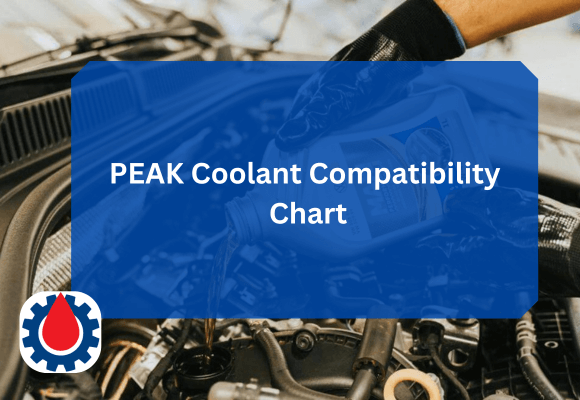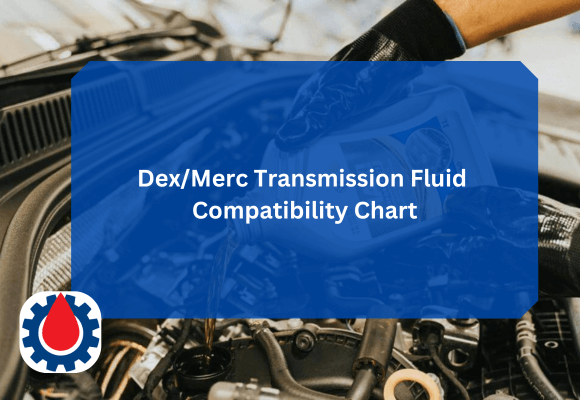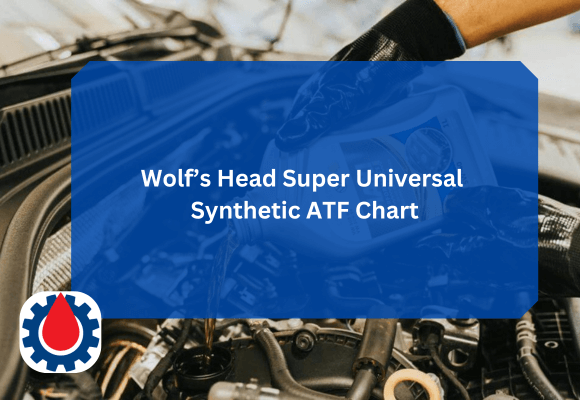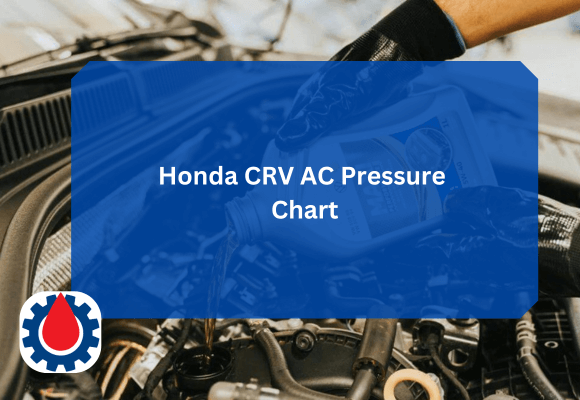PEAK offers a wide range of coolants designed to meet the needs of various vehicle makes and models. Although many of its products are marketed as “All Makes, All Models,” it’s still vital to understand compatibility differences before mixing or switching coolants.
This guide explains PEAK coolant compatibility, provides a detailed compatibility chart, and offers best practices for using and mixing different coolant types.
PEAK Coolant Compatibility Chart
| Product Name | Type | Color | Vehicle Application | Compatible With |
|---|---|---|---|---|
| PEAK® All Vehicles Antifreeze + Coolant | Universal OAT | Yellow | All makes/models (passenger cars, SUVs, light/medium trucks, motorcycles; North American, Asian, European) | All antifreeze types/colors; suitable for top-off or full flush & fill |
| PEAK® DEX-COOL® Compatible | Extended Life OAT (DEX-COOL) | Orange | GM vehicles (1995+), all makes/models | DEX-COOL® systems; universal extended life coolants |
| PEAK® OET European Vehicles (G11/G12) | HOAT/OAT | Purple/Violet | European vehicles (VW/Audi G11/G12, Mercedes, BMW pre-2014) | G11, G12, G12+ specs; not for G13 without flush |
| PEAK® Asian Vehicles | Phosphate-based OAT | Pink/Red | Asian vehicles (Toyota, Honda, Nissan, Hyundai, etc.) | Asian OEM specs; compatible with similar phosphate-free Asian formulas |
| PEAK® Global Lifetime | Global OAT | Red | All heavy-duty/off-road engines | Global OAT extended life; nitrite-free systems |
| PEAK® Final Charge NOAT | Nitrited OAT (NOAT) | Red | Heavy-duty diesel engines (on/off-road) | CAT ELC, Cummins ES Compleat, Shell Rotella ELC; requires SCA maintenance |
| PEAK® Fleet Charge Hybrid | HOAT Hybrid | Blue | Heavy-duty engines with SCA | John Deere Cool-Gard II, ELC nitrited systems; compatible with SCAs |
| PEAK® ELC Nitrite-Free | OAT Nitrite-Free | Yellow/Red | Diesel/gasoline/natural gas engines (on-road) | Nitrite-free ELC; Detroit Power Cool Plus, Chevron Delo ELC NF |
| PEAK® SCA Precharged | Conventional SCA | Pink/Fuchsia | Heavy-duty engines requiring SCA | Fully-formulated SCA systems; Prestone Command HD, CAT DEAC |
| PEAK® Pro-Series POAT | Phosphate OAT | Orange/Red | Advanced heavy-duty (on/off-road) | Stabilized phosphate systems; 2-EHA free; compatible with gaskets/hoses in mixed fleets |
| PEAK® OET Asian Vehicles Extended Life | Extended Life OAT | Red | Asian vehicles (Toyota, Lexus, Scion, 2010+) | Toyota Super Long Life, Honda Type 2, Nissan Blue Long Life |
| PEAK® OET European G13 | Silicate-Free OAT | Violet | VW/Audi (2014+), Porsche, Lamborghini | G13 specs; compatible with Glysantin G40, BASF Glysantin G30 |
| PEAK® Conventional Green | IAT (Inorganic Acid Technology) | Green | Older vehicles (pre-1990s), classic cars | Conventional green antifreeze; not for extended life systems |
| PEAK® Heavy Duty ELC | Extended Life OAT | Red | Heavy-duty diesel (on/off-highway, marine) | Cummins CES 14603, Volvo/Mack extended life coolants |
| PEAK® Motorcycle & Powersports | Universal OAT | Clear/Yellow | Motorcycles, ATVs, UTVs, snowmobiles | All motorcycle/powersports antifreeze; silicate-free for aluminum engines |
Related Coolant Mix Ratio Chart(For All Coolant Types)
Key Compatibility Rules
1. Always Flush Before Changing Coolant Types
Even if a coolant claims “universal” compatibility, it’s never wise to mix it with an unknown or incompatible formula. A complete system flush prevents chemical reactions and sediment buildup that can damage your cooling system.
2. Match Chemistry, Not Color
Coolant colors, green, red, orange, blue, or yellow, are not a reliable indicator of chemical compatibility. Manufacturers often dye coolant differently for marketing purposes. Always check the coolant’s base technology (OAT, HOAT, or IAT) and ensure it matches your vehicle’s requirements.
3. Follow Vehicle Manufacturer Recommendations
Each vehicle manufacturer specifies a particular coolant chemistry. Always refer to the owner’s manual or manufacturer specifications. Using the wrong coolant may void the vehicle warranty and compromise corrosion protection.
Related 60/40 Coolant Mix Chart(Complete Guide)
4. Use the Correct Coolant-to-Water Ratio
Most PEAK coolants are pre-diluted at a 50/50 ratio, providing optimal freeze and boil-over protection. If using concentrate, ensure you mix it with distilled water in a 50/50 ratio for best performance.
5. Be Careful When Topping Off
If you are only topping off your coolant rather than performing a full flush, use the exact same coolant type already in the system. If the existing coolant type is unknown, use PEAK All Vehicles coolant as a temporary solution, but perform a flush as soon as possible.
6. Special Considerations for Heavy-Duty Engines
Heavy-duty vehicles such as trucks and diesel engines may require specific additives like nitrites for extra corrosion protection. PEAK Heavy Duty ELC NF (Nitrite-Free) is compatible with many modern diesel systems, but confirm compatibility with your engine manufacturer before use.
Related BMW Leaking Coolant but Not Overheating(5 Causes + Solutions)
Practical Examples
- GM Vehicles: Cars that came from the factory with orange Dex-Cool coolant can use PEAK OET Orange after a proper flush.
- Asian Vehicles: Toyota, Honda, or Hyundai vehicles using red or blue OAT coolants are best served with PEAK OET Asian Coolant.
- European Vehicles: Use PEAK OET European (pink or violet) to match BMW, Mercedes, or VW HOAT formulas.
- Older Vehicles: Classic cars originally designed for green coolant should continue using PEAK Conventional Green or a similar IAT coolant.
Best Practices for Maintenance
- Replace coolant every 5 years or 150,000 miles (whichever comes first) for extended-life PEAK coolants.
- Inspect the coolant reservoir regularly for discoloration or debris, signs that a flush is needed.
- Avoid mixing coolants from different brands unless their chemistry and specifications are identical.
- Use a coolant tester to check freeze and boil protection periodically.
Related Where to Buy The Proper BMW Coolant(5 Legit Places)
FAQs
Does PEAK coolant work for all vehicles?
PEAK offers several coolants, including the PEAK All Vehicles Antifreeze + Coolant, which is designed to work in all makes and models of cars and light-duty trucks. However, while it’s labeled “universal,” it’s still best practice to verify your vehicle’s manufacturer specifications before using it. For optimal performance, always flush the system before switching to a universal coolant.
What coolants are compatible with each other?
Coolants are compatible only when they share the same chemical base, such as OAT (Organic Acid Technology), HOAT (Hybrid OAT), or IAT (Inorganic Acid Technology). Mixing coolants with different chemistries can cause sludge, scale buildup, and corrosion.
Always match the coolant technology recommended by your vehicle’s manufacturer and avoid mixing different types unless explicitly stated as compatible.
Can PEAK antifreeze be mixed with any color?
No. The color of the coolant does not determine compatibility. Although some PEAK coolants are advertised as mixable, it’s risky to rely on color alone. Green, orange, pink, blue, or yellow dyes are used for identification but may represent entirely different chemistries.
If you must top off your coolant, use the same type and brand already in your system or perform a complete flush before changing colors.
Related STP Oil Filter Fit Chart(Complete Guide)
Can I use PEAK coolant in a Toyota?
Yes, you can use PEAK Original Equipment Technology (OET) Asian Vehicle Coolant, which is formulated for Toyota, Honda, Nissan, Hyundai, and other Asian brands. It uses phosphate-enhanced OAT chemistry and provides the same protection as Toyota’s red or pink factory coolant. Always match the correct color and chemistry for your vehicle’s make and model for best results.
Can I use PEAK coolant in my BMW?
Yes, but only if you use the PEAK OET European Coolant, which meets the HOAT (Hybrid Organic Acid Technology) requirements for BMW, Mercedes-Benz, Audi, and Volkswagen vehicles. It’s designed to protect aluminum components and prevent corrosion in European cooling systems.
Avoid using universal or non-European formulas in BMWs unless the coolant specifically meets BMW’s OE specifications.
Final words
PEAK offers a comprehensive range of coolants suitable for nearly every type of vehicle. While products like PEAK All Vehicles are formulated for universal use, understanding the underlying chemistry remains essential. Mixing incompatible coolants can reduce corrosion protection, shorten coolant life, and harm your cooling system.
The safest approach is to match your vehicle’s manufacturer requirements, perform a full system flush before switching coolant types, and use the right PEAK coolant line that aligns with your car’s cooling technology. With the correct coolant, your engine will stay protected from overheating, freezing, and corrosion all year round.




